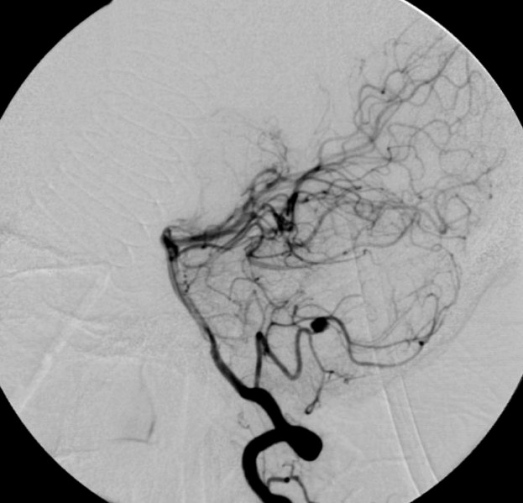Cerebral Aneurysm
The most common cause of a subarachnoid hemorrhage is the cerebral aneurysm. These can occur along any point of a cerebral artery but there are a number of locations that are most frequent and usually at a branch point. These include the anterior communicating artery, internal carotid/middle cerebral arteries, posterior communicating artery, posterior cerebral/basilar arteries, posterior inferior cerebellar artery. The aneurysm shown in the above angiogram is on the posterior inferior cerebellar artery.
Why neuromonitoring…
During surgical repair of an aneurysm, a small clip is applied to the base of the aneurysm. Occasionally, the clip will impede blood flow through the intact artery. This can have a profound affect on the flow of blood to brain tissue supplied by that artery and depending on location, can lead to paresthesia or paralysis. With intraoperative neuromonitoring, the neurophysiologist is testing the function of the brain tissue before, during and after the clip is applied. Any changes in the sensory or motor cortex are immediately reported to the surgeon enabling adjustments to be made to the position of the clip. This ensures that undue damage to the cortex is avoided.
